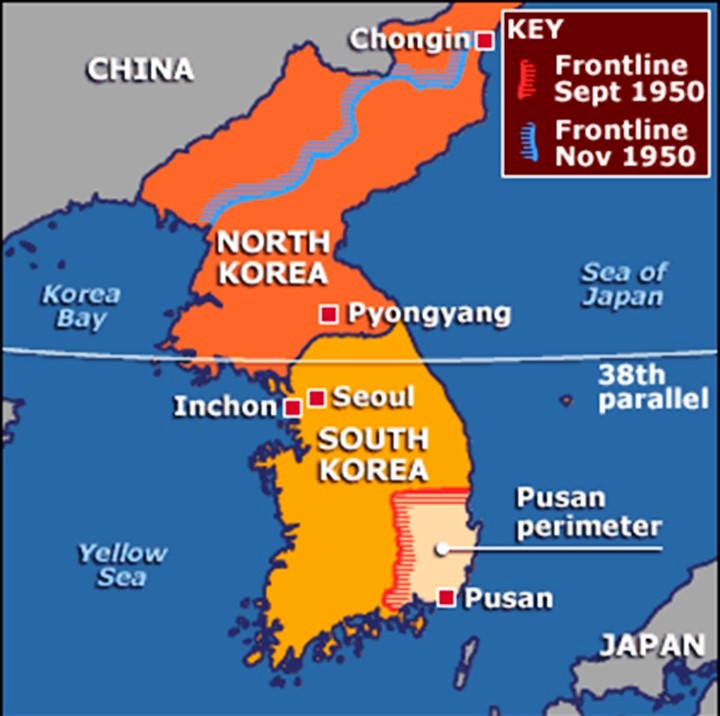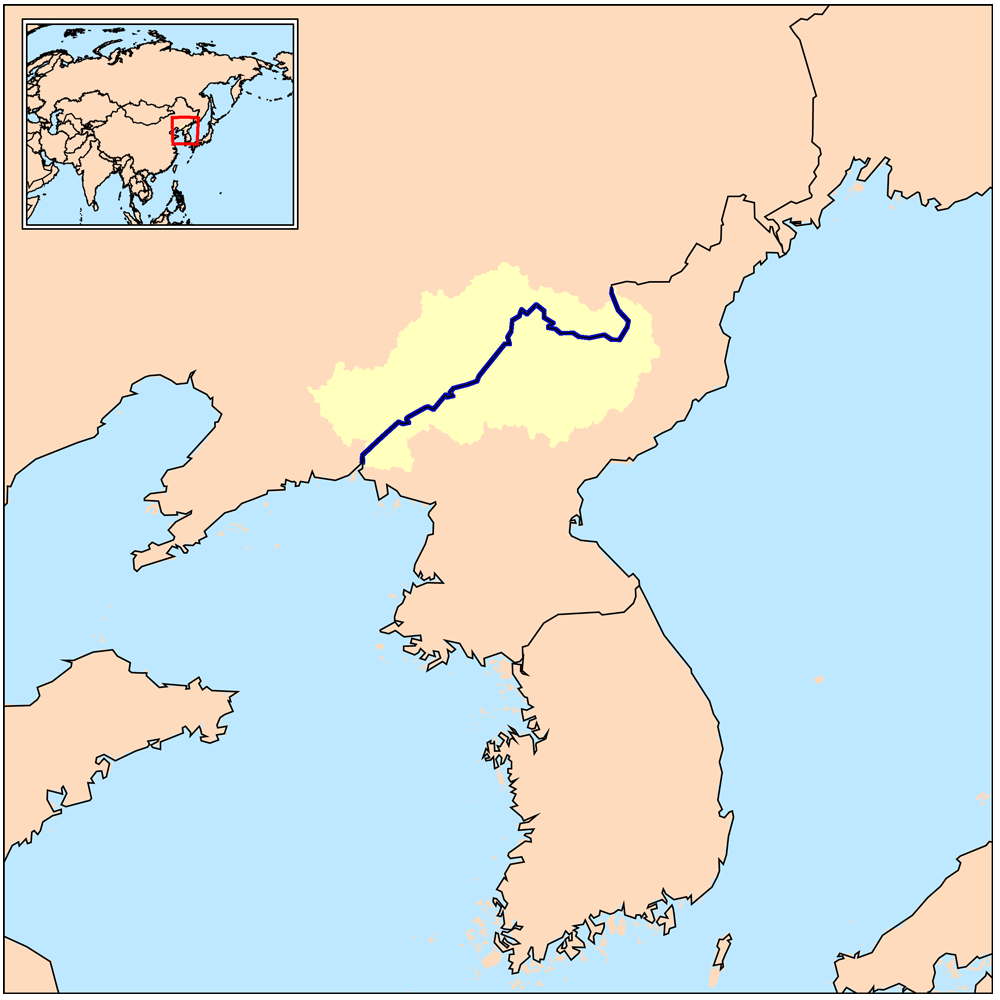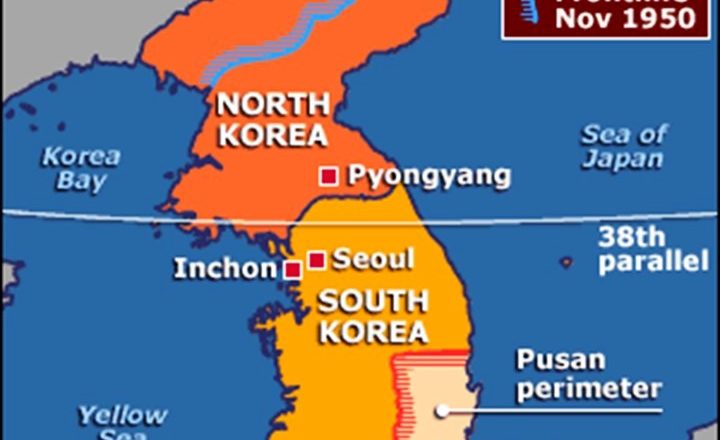A nation must think before it acts.
This report summarizes a lecture by Arthur Waldron at a History Institute for Teachers on Why America Goes to War, cosponsored by FPRI, the First Division Museum at Cantigny, and Carthage College, in March 2017. Waldron is a Professor of History at the University of Pennsylvania and a Senior Fellow of FPRI. The lecture can be viewed here.
Although the purpose of this conference was to understand why America goes to war, it is more important in the case of the Korean War, Waldron argued, to understand why Korea and China entered the war. The Communist Party of China (CCP) rose to power in China in 1949, promising full democracy, regularly held elections, and multiple parties. Once ensconced in power, Mao Zedong, Chairman of the CCP, felt he had to purge China of existential threats, incarcerating over two million political prisoners, seizing massive amounts of land, and executing thousands of dissenters. Mao felt that the United States was weak, would not intervene in an Asian conflict, and was on a trajectory towards self-destruction. At the same time, he believed that America and its European reactionaries were looking to overthrow his regime.
Mao saw China as the center of a global revolutionary movement from which great campaigns would emanate. Through military preparations and propaganda campaigns, he began readying his country for what he thought was an inevitable conflict that would test his leadership and resolve. For its part, the United States did not see a crisis looming. Many Westerners thought highly of the communists because of their reputed military campaigns against the Japanese—campaigns that did not actually take place. In fact, Mao did nothing to help the Allies defeat Japan. Because of a presumed “friendly relationship,” we did not consider it to be a major threat when the Chinese Communists allied with the Soviet Union. Years later, the Soviet Union broke their alliance with China amidst disagreements about how to deal with the West and fears in Russia that China’s policies would lead to war.
In 1945, after the war was over, the Americans and the Soviets helped the Chinese military move from Northwest China—where they were avoiding Japanese forces—to Manchuria, which has a border with Korea. This location put the Chinese in a position to assert influence in the region long before other countries had the ability to do so. In America, very few people understood the complexities of this area of the world. Barely anybody spoke Korean, and there were only a handful of Korean Americans living in America. Since the great colonial powers—Britain, France, etc.—assumed they would one day return to their colonies in East Asia, the Allies did not devote much attention to formulating a plan for the area. At the Cairo Conference in 1943—without Stalin present—Roosevelt and Churchill met with Chang Kai-shek, then-head of the Republic of China, but they did not make much headway. Roosevelt did not speak about the future of Asia at the Cairo Conference and decided to leave that issue to the United Nations.
When the end of the Pacific war came, a solution regarding Korea had not been formulated. As a result, there was a lack of planning when it came to East Asia. The Soviets and the United States had clearly marked their territory in Europe, but not in Asia. The future of Korea was in question. With that in mind, Colonel Dean Rusk and Colonel Edward Bonesteel, with the approval of the Soviets, chose the 38th Parallel as the dividing line between North Korea and South Korea—a line with zero historical significance. By 1948, two independent nations had formed: The Democratic People’s Republic of Korea in the North and the Republic of Korea in the South. Still, U.S. strategy for how to deal with Korea was very vague.

Rather than have Congress declare war, the U.S. sought a UN Security Council resolution calling for the use of force against North Korea. Truman offered up soldiers, the UN placed all forces in Korea under American control, and Congress responded by further extending the draft and allowing Truman to call up reserve forces. The Pentagon immediately called for the military to resupply the soldiers at the Pusan Perimeter. However, General Douglas MacArthur proposed that the invasion force should land at Inchon—above the invading enemy forces. This target was a very hard one to capture, and if the North Koreans had listened to China’s warnings about a surprise landing, a terrible blow would have been dealt to the Americans. The invasion was a huge success, and this victory frightened the Chinese. They believed that the Americans were laying the groundwork for an invasion of China. As a result, China sent troops under the command of Peng Duhuai.
Peng was able to get his forces south of the American military, forcing—at the time—the largest retreat in American military history. Prior to the Korean War, in 1942, Peng was the only Chinese general to launch an offensive against the invading Japanese forces— against the orders of Mao. Years later, when Mao asked for someone to lead the offensive against the Americans in Korea, most refused—except Peng.

The Yalu River – on the border between China and North Korea (Source: Kmusser/WikiMedia Commons)
The Chinese chased the Americans passed the 38th Parallel, but, at the same time, became very overextended. Around this time, General MacArthur and Truman found themselves in a very public quarrel about how the United States should proceed in the war. Truman would eventually fire him over these disputes. The generals who replaced MacArthur quickly restored discipline to the Army. As a result, the Army started seeing success again. While fighting, the Americans understood that they had to make sure the Chinese did not have the ability to hold ground and entrench themselves. If they used this strategy properly, the Americans could have counterattacked all the way up to the Yalu River. Tragically, Truman made the mistake of stopping the Army’s advance at the 38th Parallel, which allowed the Chinese to entrench their forces and prevent the United States from achieving a decisive end to the war.
In retrospect, stopping at the 38th Parallel was a tactical error. Currently, North Korea has the ability to destroy the city of Seoul in the blink of an eye. The Americans should have fought all the way to the Yalu River (see map) and reunified Korea under one flag.
So, why did North Korea go to war? They thought that it would be an easy way to unite Korea under communist rule. Why did China go to war? They thought that they needed to energize the Communist Revolution by achieving a great victory over the United States. Finally, why did the United States go to war? The U.S. had to: for what would the world think if it stood idly by and watched communism continue to spread? One of the biggest takeaways from the Korean War is that it has its roots in an ideological conflict, which still continues to this day.




